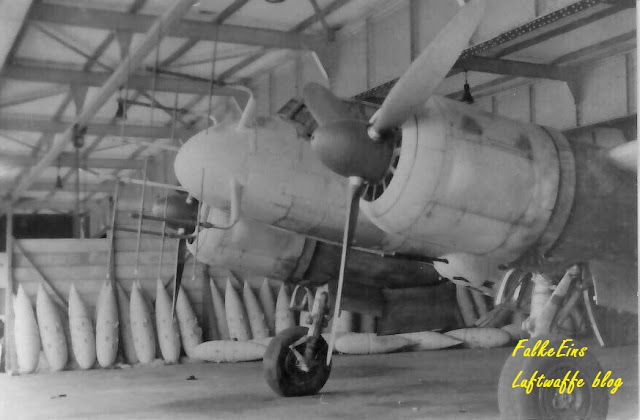The G-series were the first Ju 88 variants not based on the Ju 88 bomber ‘A’ fuselage. Re-designed and streamlined, the Ju 88 G-series had a new 'nose' and omitted the A-series' Bola ventral defensive gun position and featured a single ‘fish-eye’ armoured defensive weapon mount in the rear cockpit. It was fitted with the enlarged squared-off vertical fin/rudder tail unit/rear fuselage of the Ju 188 (making it slightly longer than the C-series) - this was an attempt to compensate for the increased torque of the BMW 801 D-2 radials which "due to manufacturing difficulties" (Becker, p75) did not rotate in opposing directions. The wing had the extended tips with enlarged ailerons and the tailplanes also had extended tips. As with the C-series there was no 'standard' armament fit, although the 'G' usually toted a quartet of cannon in a ventral weapons tray. See John McIllmurray's new 'Modellers guide to the Ju 88 G-6' for discussion and drawings on the location and variations in the G-6 of the 'Schräge Musik'. The G-6 used the Jumo 213 in-line engine with the characteristic raised supercharger intakes.
Above; Ju 88 G-1 with ventral Waffenbehälter (‘weapons gondola’) toting MG 151/20 cannon. Probably an NJG 2 machine, autumn 1944. Below; another NJG 2 Gustav, note Totenkopf death's head painted on the ventral gondola and open cockpit access hatch. Pilot is Lt. Johannes Strassner..
Below; one of the most modern nightfighters in the Luftwaffe's fleet was this G-6 'C9+AR' (WNr. 623211) used by 21-victory NJG 5 ace Hptm Werner Hopf to desert to Switzerland on the night of 30 April 1945 in a flight from Lübeck-Blankensee to Dübendorf. Note nose-mounted FuG 218 VR Neptun AI radar and associated tail-warning antenna on the enlarged 'Ju 188' vertical fin..
_.jpg)
_.jpg)
Above; the dark camo finish and bomb racks indicate the nature of Hopf's last sorties around Berlin - night ground attack sorties against Soviet troops. Also on board Hopf's aircraft were two fellow officers, two women and a child. Hopf was a former Staffelkapitän of 8./NJG 5 and had been awarded the DKiG..

Ju 88 G-6 coded 'B4+SA', W.Nr. 623363 of 4./NJG 3 (formerly Nachtjagdstaffel Norwegen) which landed at Bredakra, Sweden on May 8, 1945. The aircraft had been ordered to fly to Kurland from Trondheim and assist in the evacuation of encircled German forces but landed in Sweden. Crew was Hptm. Werner Hüschens and Ofw. Sebastian Falk. Dragon 48th build of 'B4+SA' by VolkerR. Read his report below.







No comments:
Post a Comment
Thanks for visiting the Luftwaffe Blog. We welcome your comments.